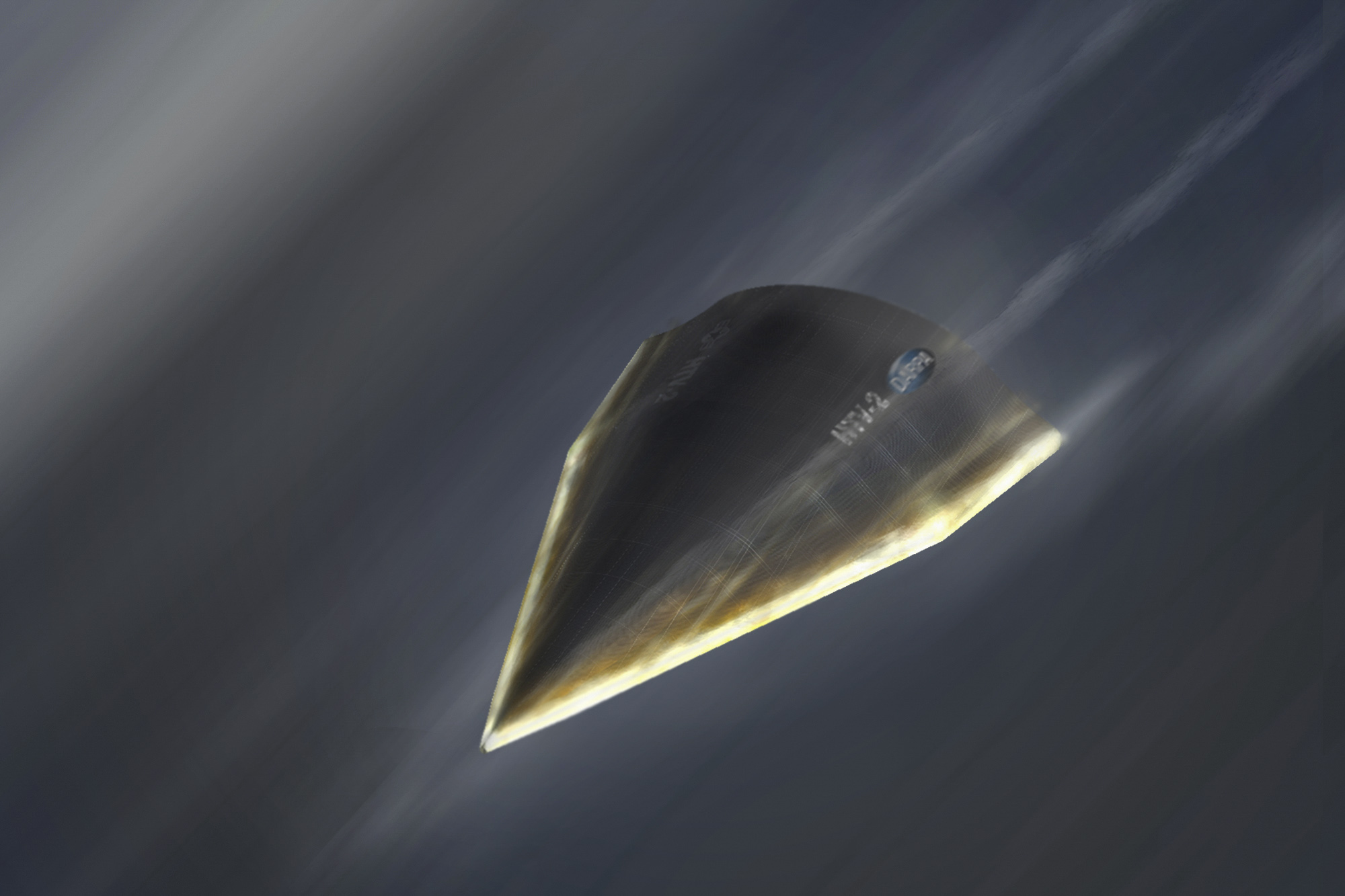Imagine tossing your carry-on into the overhead bin of an airplane in Washington, then disembarking about 90 minutes later in London, barely enough time to get tray service. Those who’ve sat in the middle seat on a transatlantic flight will tell you they wished their plane could travel at hypersonic speeds.
The idea isn’t that far-fetched – or far off – given a renewed interest in hypersonic flight.
Engineers first developed rockets to fly to space and back at hypersonic speeds – generally defined as faster than five times the speed of sound – more than 70 years ago. But hypersonic travel within Earth’s atmosphere has proven to be a technological challenge.
Chief among the problems is heat generated by friction from air on the leading edges of the aircraft as it passes the speed of sound; temperatures can reach 1,700 degrees Fahrenheit or higher depending on speed, hot enough to destroy the types of materials that typically make up airplanes.
The United States was once a world leader in hypersonic research. To this day, the global record for the fastest crewed flight, Mach 6.7, was set by then-Maj. William John “Pete” Knight in 1967 as he piloted the North American X-15, an experimental rocket-powered plane jointly owned by NASA and the U.S. Air Force.
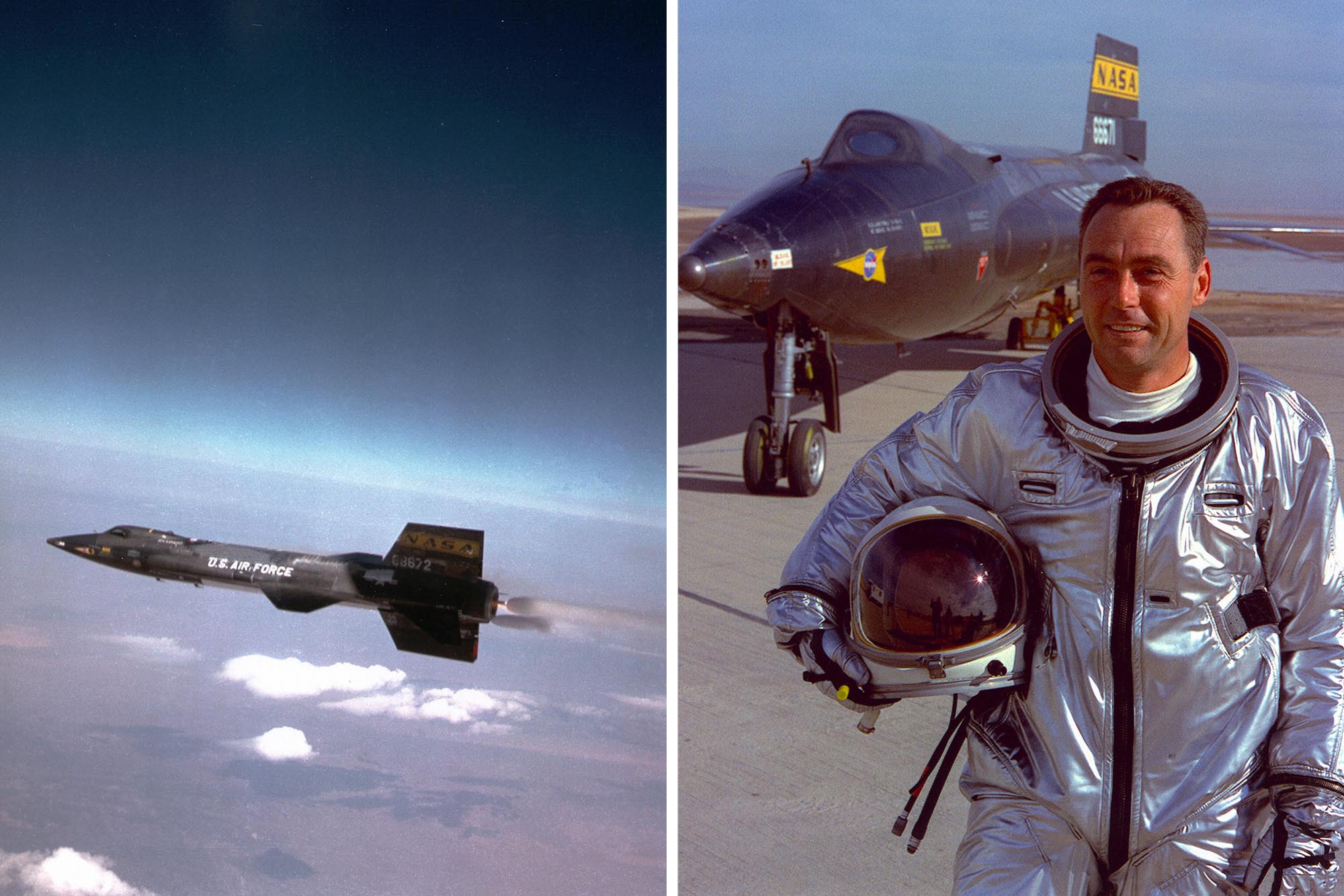
To this day, the global record for the fastest crewed flight, Mach 6.7, was set by then-Maj. William John “Pete” Knight in 1967 as he piloted the North American X-15. (U.S. Air Force photos)
In the mid-1980s, the University of Virginia School of Engineering became one of the leading research institutions in the nation focused on hypersonic flight. Today, UVA Engineering has what is considered to be one of the longest-running university hypersonic programs, through the departments of Mechanical and Aerospace Engineering and Materials Science and Engineering.
“Historically, NASA was very involved in hypersonic research and supported research at UVA,” said Christopher P. Goyne, associate professor of mechanical and aerospace engineering and director of UVA Engineering’s Aerospace Research Laboratory.
But just as the technology was starting to take off, funding for hypersonic research waned in the United States about a decade ago. The last public attempt at hypersonic atmospheric flight was the Boeing X-51 Waverider in 2013 over the Pacific Ocean near Ventura, California. The unmanned vehicle set the record for the longest duration of hypersonic flight at 210 seconds, even as university funding for hypersonic research had dropped to a trickle.
Since then, progress in hypersonic technology in the U.S. has been halting. Legislators and other federal officials who control government research funding largely believed there wasn’t a need to travel that fast, and the challenges were too daunting to invest billions of dollars.
That thinking changed recently when first China, in August 2018, and then Russia, in December of that year, claimed to have successfully tested their own hypersonic missiles. In December 2019, Russia unveiled to a U.S. delegation their highly maneuverable hypersonic glide missile they called Avangard. The Russians claimed the missile had unlimited range, flew at Mach 27 and hit a target in Siberia; they also claimed it could fly from Moscow to Washington in about 14 minutes.
Whether the missile actually flew that fast is anyone’s guess, but Putin cheered the achievement, causing a renewed sense of urgency in the United States to reinvest in hypersonic research in both the private and military sectors and to build a coalition of universities, including UVA.
The goal is to catch up. And catch up quick.
Heeding the call, UVA Engineering has formed the UVA Hypersonics Research Complex, a collaboration of 17 faculty members and their labs across Grounds, all focused on advancing hypersonic technology. The group includes faculty from the departments of Mechanical and Aerospace Engineering, Materials Science and Engineering, Engineering Systems and Environment and Electrical and Computer Engineering. The complex supports the school’s core strengths in propulsion and materials research.
UVA Engineering also has joined seven other top research institutions in a Navy-funded project to develop educational programs that will train a new generation of professionals working on hypersonic technologies. And UVA is poised to take part in a newly announced $100 million national university research program to overcome the barriers to hypersonic flight.
With geopolitical competition bringing renewed interest in hypersonic research, UVA Engineering is already soaring ahead.
The Goyne Launch
Under a bright morning sky on April 21, 1981, the Space Shuttle Columbia blasted off from Kennedy Space Center in Florida, the first launch of NASA’s new shuttle program.
On the other side of the globe, Goyne was an “ankle-biter,” Australian slang for young child, and he was caught up in the excitement. It was night at his home in Toowoomba, Australia. But as the shuttle approached, 200 miles over his head, a speck of light arcing across the starlit sky, he grabbed his parents’ binoculars to see if he could track down the American spacecraft. Columbia was traveling so fast, the crew on board witnessed about 30 sunrises on that 54-hour mission.
“It wasn’t just kids in the United States who were being inspired by the programs NASA was undertaking, but kids all over the world, and it really developed my interest in space and flight,” Goyne said.
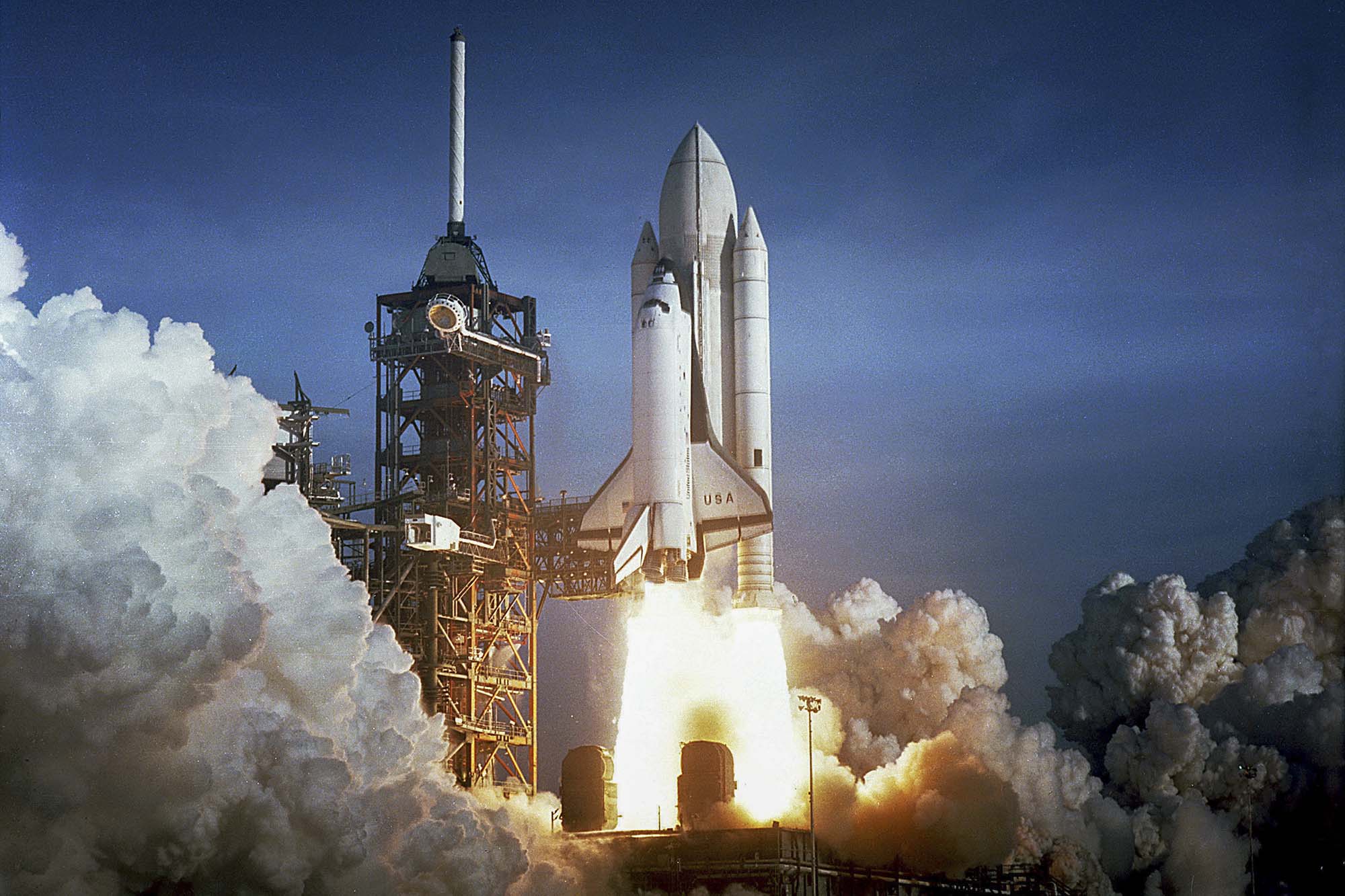
The Space Shuttle Columbia at Launch Pad 39A at the Kennedy Space Center in Florida as preparations continued in March 1981 for the first orbital test flight of NASA’s reusable space transportation system. (Photo courtesy NASA)
Goyne’s father was also a private pilot and would scoot his family to islands off the coast of Australia for quick, sunny vacations in the Southern Pacific. That would inspire Goyne to earn his wings as well.
A passion and curiosity for flying, high speeds and space fueled Goyne’s purpose in life and eventually landed him at UVA Engineering’s Department of Mechanical and Aerospace Engineering following his Ph.D. work in high-speed flight at the University of Queensland in Australia. Goyne was recruited as a research associate by James C. McDaniel, now professor emeritus, who then was leading UVA’s Aerospace Research Laboratory, which studies hypersonic aerodynamics and hypersonic propulsion.
Goyne briefly returned to the University of Queensland to work on what would become the successful launch of their HyShot hypersonic scramjet. Scramjet engines use oxygen from the atmosphere for propulsion, so they are called “air-breathing.” The launch was the first time an air-breathing engine had operated at hypersonic speeds in flight.
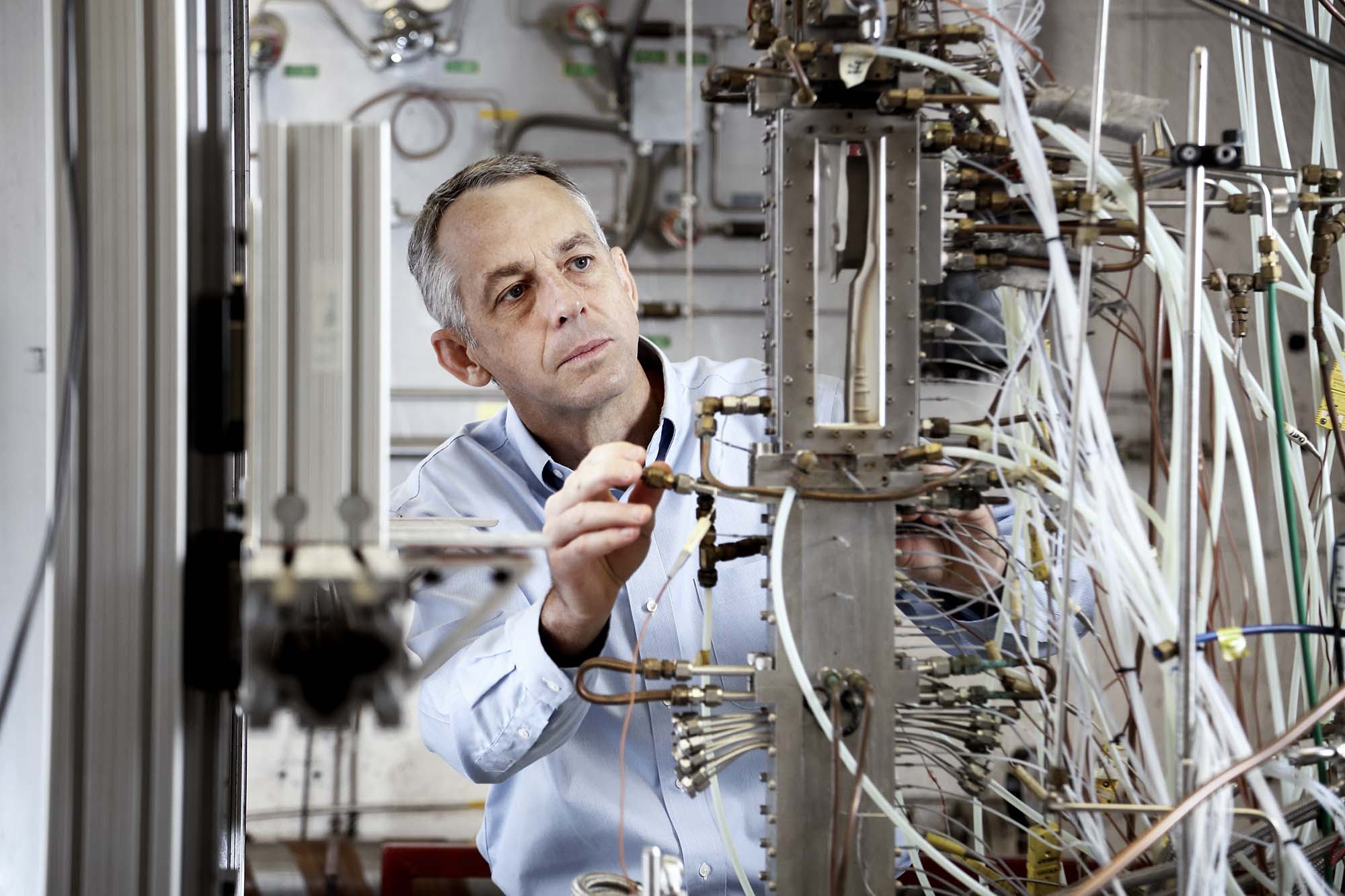
Christopher Goyne is associate professor of mechanical and aerospace engineering and director of UVA Engineering’s Aerospace Research Laboratory. (Photo by Tom Cogill)
Following this major advancement in hypersonic research, Goyne returned to UVA Engineering and joined the faculty in 2000. He continued to make strides in his research at UVA, primarily in air-breathing hypersonic propulsion. Fourteen years ago, he took over for McDaniel as director of the Aerospace Research Laboratory.
“There’s particular interest right now to enhance the innovation pipeline, get ideas out of university labs and into industry and government programs,” said Goyne, who is also the past chair of the Hypersonic Technology and Aerospace Planes Program Committee for the American Institute of Aeronautics and Astronautics. “UVA is in a unique position, because we can leverage our history and our existing research to help advance that objective.”
Roadblocks in the Air
If you want to travel through Earth’s atmosphere at hypersonic speeds, there are a bunch of technical challenges engineers must overcome. Among them are extreme heat, propulsion and maneuverability.
To begin with, how do you even get an aircraft to accelerate to hypersonic speeds?
The tried-and-true method is to launch a vehicle into space on a booster rocket and release the vehicle to glide back through the atmosphere at hypersonic speed, kind of like the Space Shuttle. This is known as a hypersonic glide vehicle. Not a bad way to travel, but for those interested in hypersonic technology for national defense, there is the disadvantage of a craft having to start its flight connected to a large booster rocket, making the craft difficult to transport and somewhat susceptible to advanced deterrence systems. The latter is a problem also experienced by traditional intercontinental ballistic missiles, which travel in a predictable arc. These missiles have been in U.S. arsenals since the 1950s.
The other option engineers, including Goyne and his colleagues at UVA Engineering, have been tinkering with for several decades is the self-powered hypersonic cruise aircraft that uses an air-breathing engine, the scramjet.

Once a scramjet reaches supersonic speed, a chamber opens wide to allow air to rush into a cavity, where the air is ignited and the gases are thrust out the back end, propelling the hypersonic vehicle. While a scramjet may not reach the same speeds as a hypersonic glide vehicle, there is the potential for a scramjet to be incorporated into a craft that can take off and land under its own power, possibly leading to manned flight at hypersonic speeds.
Both types of vehicles must contend with the extreme heat imposed on them by friction and shock waves. As the aircraft move through Earth’s dense atmosphere at supersonic, and then hypersonic, speeds, the resulting shock waves increase the pressure outside the aircraft and compress gas molecules on the leading edges, where heat can build up to thousands of degrees Fahrenheit. The higher the Mach number, the more heat is generated; and if the material shrouding the craft isn’t designed to quickly dissipate the heat, the material may melt and fail.
Engineers have been addressing a way to dissipate that heat for more than 70 years on rockets.
This area of materials science and mechanical engineering has been a specialty for researchers at UVA Engineering for decades and includes hundreds of breakthroughs in the development of heat transfer and thermal barrier technologies. Researchers at UVA Engineering have developed better heat shields on Navy ships, designed ways to test heat buildup on material surfaces at the nanometer scale and helped design coatings and architectures to cope with extreme temperatures.
For hypersonic aircraft to be useful, and one day carry us from one end of the globe to the other in a few short hours, they need to be maneuverable. A millimeter too much trim, and the trajectory could be off by miles in just a fraction of a second.
Engineers have faced and overcome these kinds of mathematical and mechanical engineering problems in the past. A prime example was getting a human to the moon and back.
Because of the enormous complexities involved in creating a hypersonic aircraft for flight inside the atmosphere, perhaps it’s not surprising some government officials were reluctant to spend billions of dollars on research.
“I think a lot of the historical waves in hypersonic research funding resulted from the fact that the Department of Defense never really perceived a real need for hypersonic aircraft,” Goyne said. “Historically, NASA was very involved in hypersonic research and supporting university research because of the potential for civil applications like high-speed transport and access to space.”
Traveling Through the Past to Reach the Future
With hands shoved deep into pockets and bodies wrapped in parkas, NASA engineers and other scientists stood around launch pad 33 at White Sands Proving Ground in New Mexico on a frigid morning in February 1949. They were preparing to launch the world’s first two-stage rocket.
Project Bumper 5 had set a goal of achieving maximum altitude and flying above the Kármán line, the generally accepted altitude at which Earth’s atmosphere becomes outer space (about 62 miles above us.) To achieve this, they attached a second rocket to a German V2 rocket that had been confiscated after World War II.
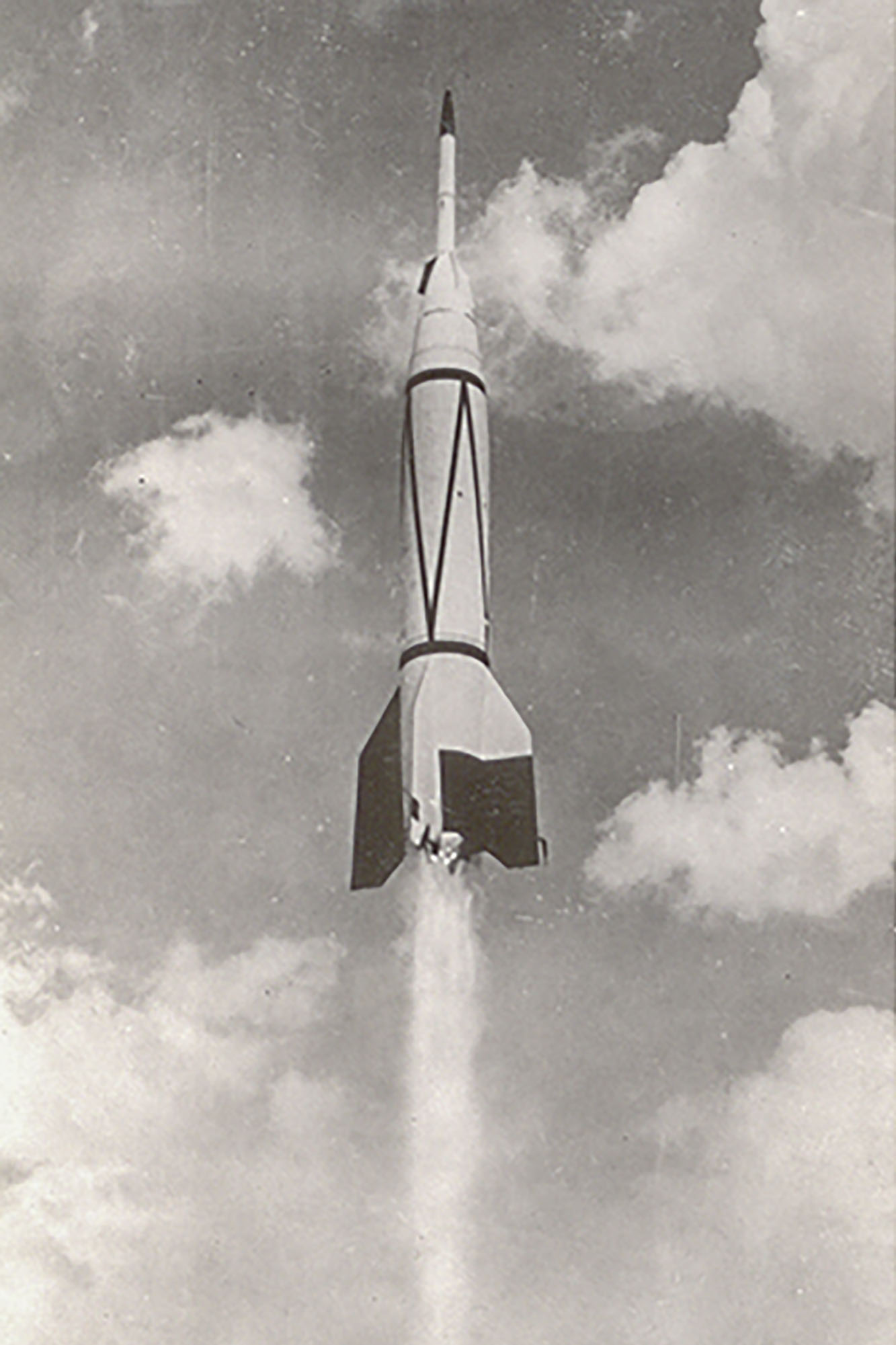
In 1949, the “Bumper-WAC” became the first human-made object to enter space as it climbed to an altitude of 393 kilometers (244 miles). (Photo courtesy NASA/JPL-Caltech)
Their hope was that after the booster rocket hit a certain altitude, the second-stage sounding rocket, filled with measurement instruments, would ignite and continue heading for space. It worked. After achieving a record altitude of 244 miles, the second-stage rocket nosed over and descended back through the atmosphere at a record 5,000 mph. This was the first time a human-designed machine had reached hypersonic speeds, and the breakthrough would pave the way for human space flight.
Since then, engineers and scientists around the world have built a variety of rockets that reach hypersonic speeds, enabling the nuclear arms race during the Cold War years. Superpower countries eventually built systems that could intercept these kinds of weapons.
At the same time, the U.S. embarked on a new mission to build a machine that could be launched on rockets and fly back to Earth like an airplane. This began NASA’s three-decade space shuttle program.
The engineering challenge was extreme as the shuttle, in many ways, was the original hypersonic glide vehicle. On each reentry to Earth’s atmosphere, the shuttles would reach speeds of about Mach 22, their heat-shield tiles made of sand dissipating heat blazing at more than 2,700 degrees Fahrenheit.
Because of the space shuttle program, NASA engineers started to consider whether hypersonic travel was achievable within the atmosphere; the agency began experimental design of vehicles that could meet the rigors of hypersonic flight through the atmosphere with the idea that one day, there could be a vehicle that could take off from a runway like an airplane and fly into space.
In March 2004, NASA dropped the X-43A Hyper-X from the wing of a B-52b, flying more than 40,000 feet over the Pacific Ocean. The 12-foot-long X-43A, which was attached to a Pegasus booster rocket, shot skyward to over 95,000 feet. After separating from the booster rocket, the vehicle opened the intake to its air-breathing engine, where the air mixed with fuel and ignited, accelerating the craft to Mach 6.83 for 10 seconds before a six-minute hypersonic glide into the ocean.
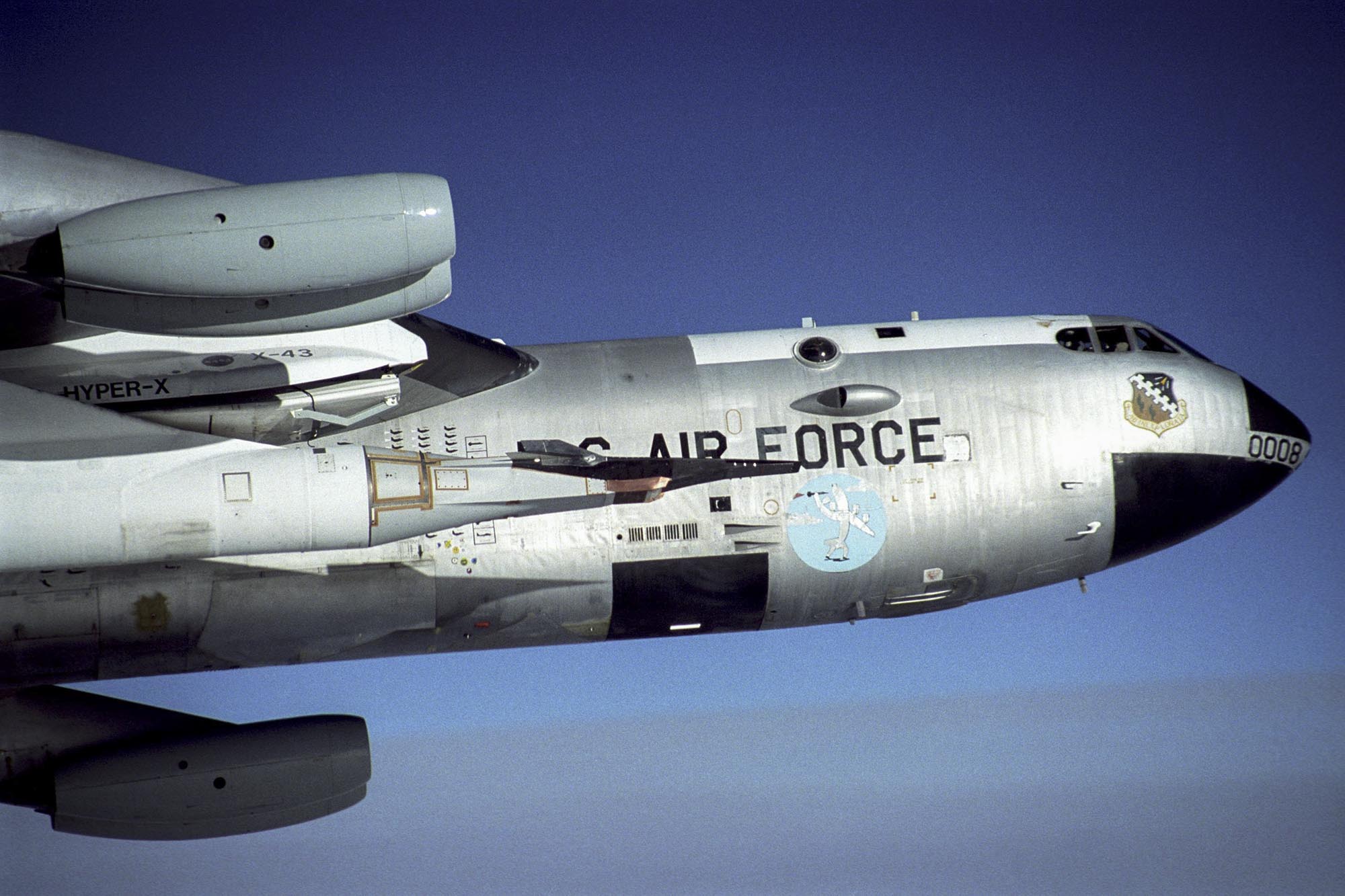
The black X-43A rides on the front of a modified Pegasus booster rocket under the wing of NASA's B-52B mother ship. The photo was taken during a captive carry flight Jan. 26, 2004. (Photo courtesy NASA/Carla Thomas)
This marked the first time a scramjet had ever operated in flight on an aircraft. NASA flew one more X-43A test later that November and achieved a record speed of Mach 9.6.
You might think these advancements would have led to more research and innovation in the United States, but just as things were taking off, the financial crisis of 2007-08 brought research crashing down. Since then, apart from the U.S. Air Force X-51 program that made incremental advances on NASA’s X-43 program, the government hasn’t been as focused on hypersonic research, allowing China and Russia to catch up and glide past.
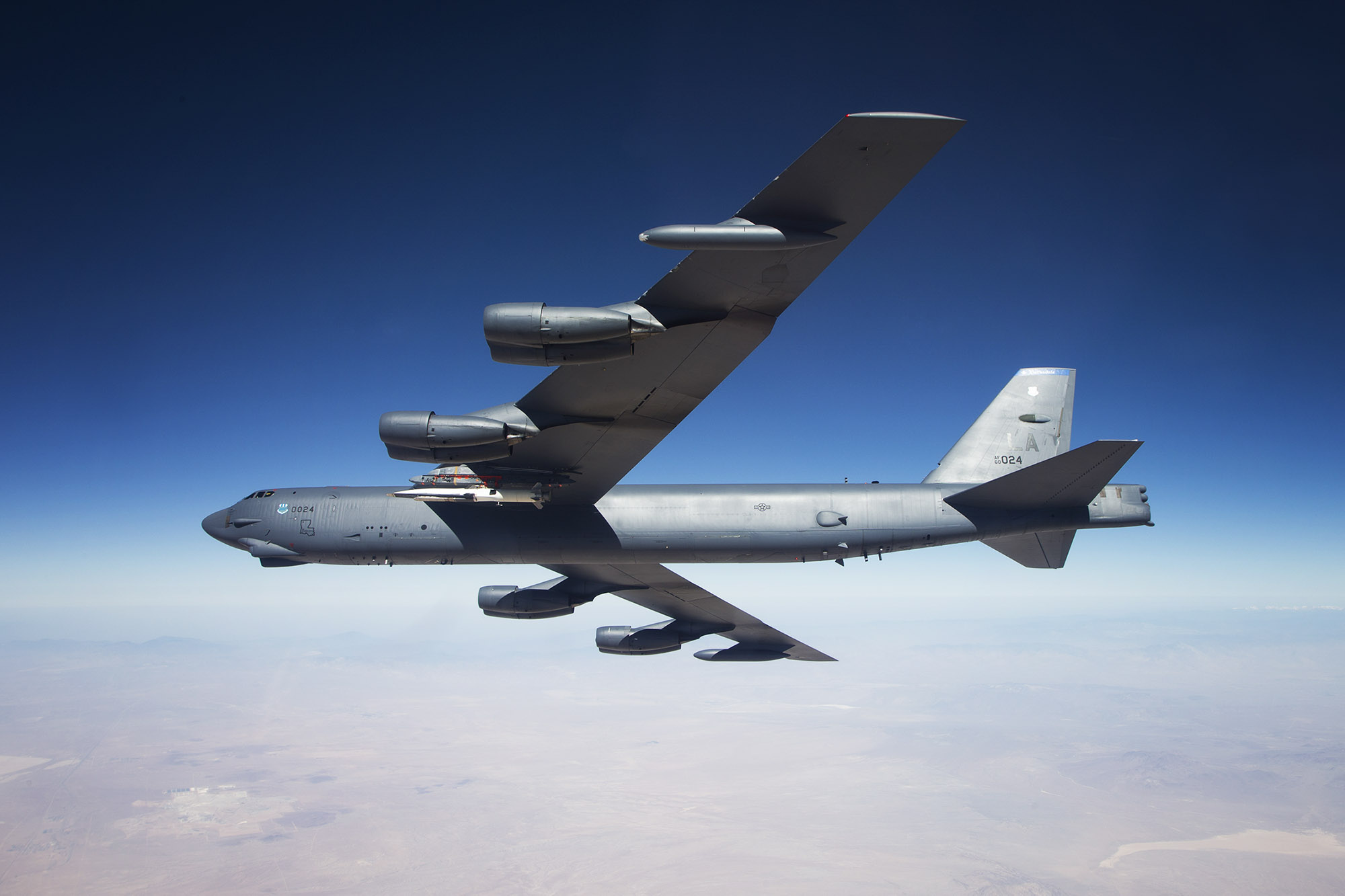
The last public attempt at hypersonic atmospheric flight was the Boeing X-51 Waverider in 2013 over the Pacific Ocean near Ventura, California. (Photo courtesy U.S. Air Force)
This new geopolitical reality is beginning to spawn a new arms race. Last year, Congress allocated $2.6 billion toward the advancement of hypersonic flight. Some of this funding is aimed at higher education.
As part of the renewal, UVA, in partnership with the University of Tennessee Space Institute, Georgia Institute of Technology, Ohio State University, Florida A&M University, Florida State University, Purdue University and Missouri University of Science & Technology, was recently awarded a grant from the Navy to help cultivate the future Department of Defense hypersonic workforce. The team will develop multi-disciplinary educational curricula and supporting programs. UVA is taking the lead on widening the pipeline of undergraduate students who will enter hypersonic-related careers in industry, government and academia.
Separately, the Department of Defense announced on Oct. 26 a University Consortium for Applied Hypersonics, which will bring top U.S. universities together to collaborate on the challenges facing hypersonic flight. The consortium will be funded at $20 million per year for up to five years. To oversee the government’s renewed focus on hypersonic research and development, the Defense Department also launched the Joint Hypersonics Transition Office to facilitate university research and then channel it into applications for the government and industry.
UVA Engineering’s long history as a leader in hypersonic research and materials science and mechanical engineering bode well for contributions to these new efforts.
UVA’s Core Strengths
On the back side of Observatory Hill, UVA Engineering’s Aerospace Research Laboratory sits in a building that has evolved over time.
Outside, old brick meets new, and green corrugated steel and huge steel tanks are connected to the building with miles of winding tubes and pipes.
Inside, the building holds many secrets.
Unbeknownst to all but a select few, the older, bricked section of the building once housed high-speed gas centrifuges, spinning at millions of rotations per second. Sitting in deep pits cut into the rock beneath the building, UVA scientists and engineers enriched uranium.
In 1941, using a centrifuge he invented, UVA physicist Jesse Beams became the first person to isolate U-235, the uranium isotope used to make nuclear bombs. Beams was an early figure in the Manhattan Project. His secretive work continued through the Cold War as nuclear proliferation increased globally, and with it the need for enriched uranium. However, as the arms race ended, the demand for enriched uranium fell, and the centrifuges were plucked from the building, leaving the space open for the next major scientific advancement.
Goyne’s office sits just off the entrance to the old section of the building. His space is filled with scale models of planes, jets and hypersonic vehicles. He’s awfully proud of the Bell X-1 model autographed by Chuck Yeager, the first person to fly supersonic.
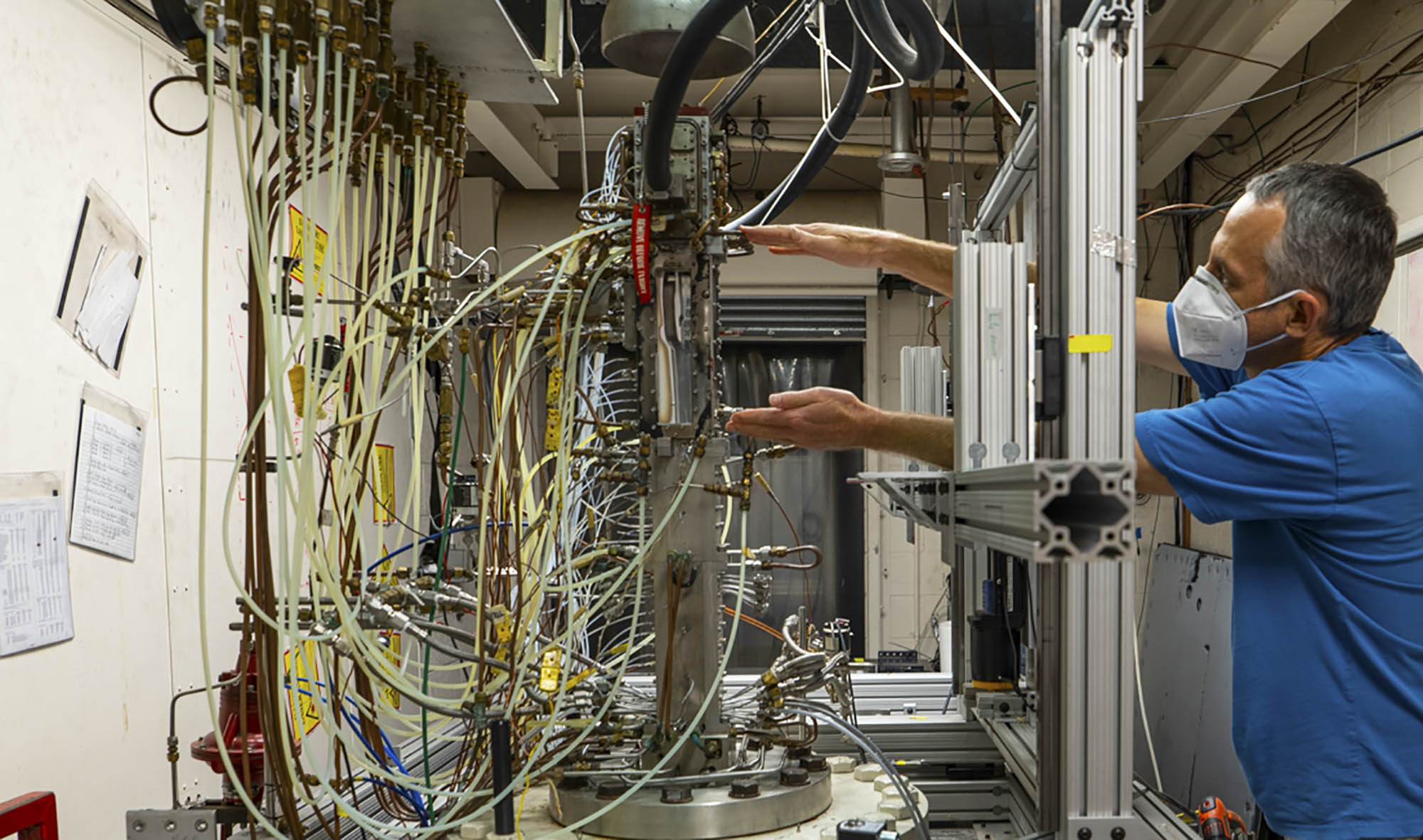
Christopher Goyne shows where the Mach 5 combustion takes place in UVA Engineering’s hypersonic wind tunnel. (Photo by Chris Tyree)
Behind the wooden desk, a cork board is pinned neatly with patches from various space missions, including a special one designed for UVA Engineering’s own Libertas CubeSat, which was launched in April 2019 from NASA’s Mid-Atlantic Regional Spaceport at Wallops Island on Virginia’s Eastern Shore. Libertas was one of three, 4-inch cubed satellites developed by Virginia universities to measure Earth’s atmosphere, a program Goyne helped lead.
A few feet down the hall from his office, past posters proclaiming NASA’s most famous space missions and a machinist’s room smelling heavily of oil and cold metal, the University’s Supersonic Combustion Facility, a one-of-a-kind wind tunnel, sits vertically in one of those centrifuge pits.
While most hypersonic wind tunnels can only operate for a few seconds or minutes at high speed, UVA Engineering’s Mach 5 wind tunnel can operate indefinitely, allowing for real-world comparison testing of fuels, materials and components over time at hypersonic speed. This unique wind tunnel is electrically heated, which means the test air is not contaminated with the products of combustion that are often present in combustion-heated wind tunnels like a larger one found down the interstate at NASA’s Langley Research Center in Hampton. UVA’s wind tunnel is the only one of its kind in the world.
If you want to know how a type of metal holds up at Mach 5 for 90 minutes, about the length of time it would take to get from New York to London flying in a hypersonic vehicle, this machine can do the test. Since it was brought online in the late 1980s, UVA’s tunnel has been involved in numerous studies with NASA, the Department of Defense, the Air Force and the National Science Foundation.
A pair of small, insulated glass windows let engineers observe and see the material being tested by the superheated air, which is generated in the belly of the machine below and shot upward. A round exhaust vent above the glass enclosure catches the blasting 3,000-degree heat, sending it safely out above the roofline.
When running, the tunnel sounds like a jet engine on takeoff. Beside the pit housing the wind tunnel, and behind lead curtains to muffle the roar, a control room hums with computers and electronic devices. They monitor every nuance of operation.
Adjacent to the control room, a large table is set up with mirrors directing the lab’s laser through a small, quarter-sized hole in the wall that lines up perfectly with the glass windows of the wind tunnel. This allows for precise measuring of how materials react to hypersonic speeds over time, something that excites Haydn N. Wadley, University Professor and Edgar Starke Professor of Materials Science and Engineering.
The Wadley Research Group is one of 10 laboratories that total 25,000 square feet devoted to the UVA Hypersonic Research Complex. For more than 30 years, Wadley has been pushing the boundaries of materials science and engineering. His group’s research has resulted in more than 490 research publications and 30 UVA-assigned patents, and has spun out three companies.
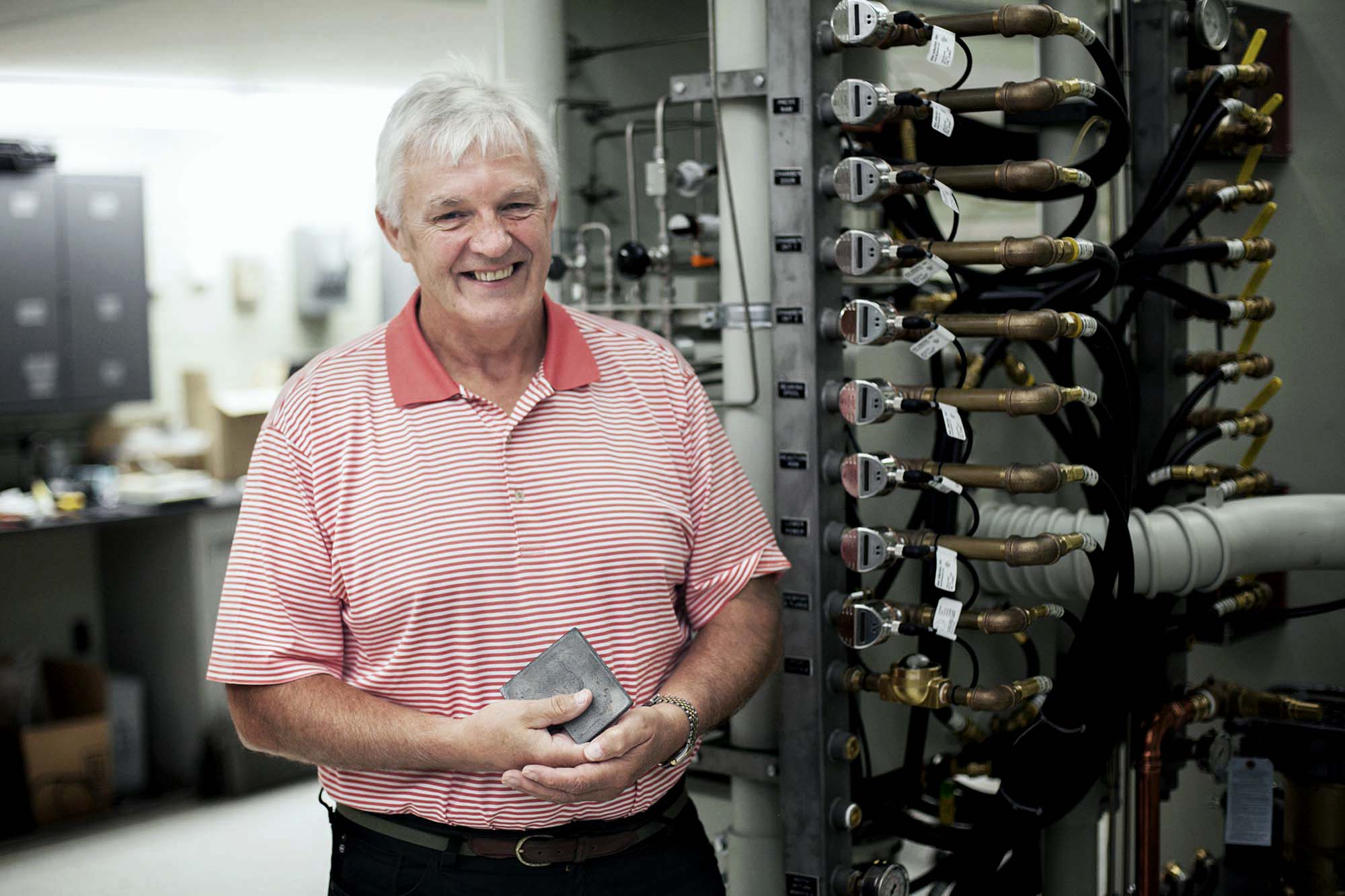
Haydn Wadley is a University Professor and the Edgar Starke Professor of Materials Science and Engineering at UVA. (Contributed photo)
“Materials science is a fascinating subject to me, because it requires one to fuse knowledge from physics and chemistry with engineering needs to design the materials that enable society to grow and evolve,” Wadley said. “We see future technologies such as quantum computing and communications, eco-friendly electric ground, air and marine transportation, future hypersonic systems, and systems for the human exploration and use of space as all dependent upon the development of new generations of materials.
“As humans leave the safety of the Earth’s atmosphere and travel to, and then return from, the lunar surface, then Mars, and eventually other places in our solar system, new materials will be essential if they are to make the trips safely.”
While Wadley has expertise in many different areas of research, his work in high-temperature materials science and thermal management looks to advance the ability to fly at higher Mach speeds over longer distances.
His interest in materials for hypersonic travel is shared by Elizabeth J. Opila, professor of materials science and engineering and director of UVA’s Rolls-Royce University Technology Center For Advanced Material Systems. Her research focuses on materials for use in extreme environments like those found in aircraft engines, rocket engines, energy conversion technologies and thermal protection systems.
After receiving her Ph.D. from the Massachusetts Institute of Technology, Opila spent almost two decades as a research scientist at NASA’s Glenn Research Center working on, among other things, the space shuttle program, specifically investigating the degradation of the material used on the leading-edge subsystem of the shuttles.
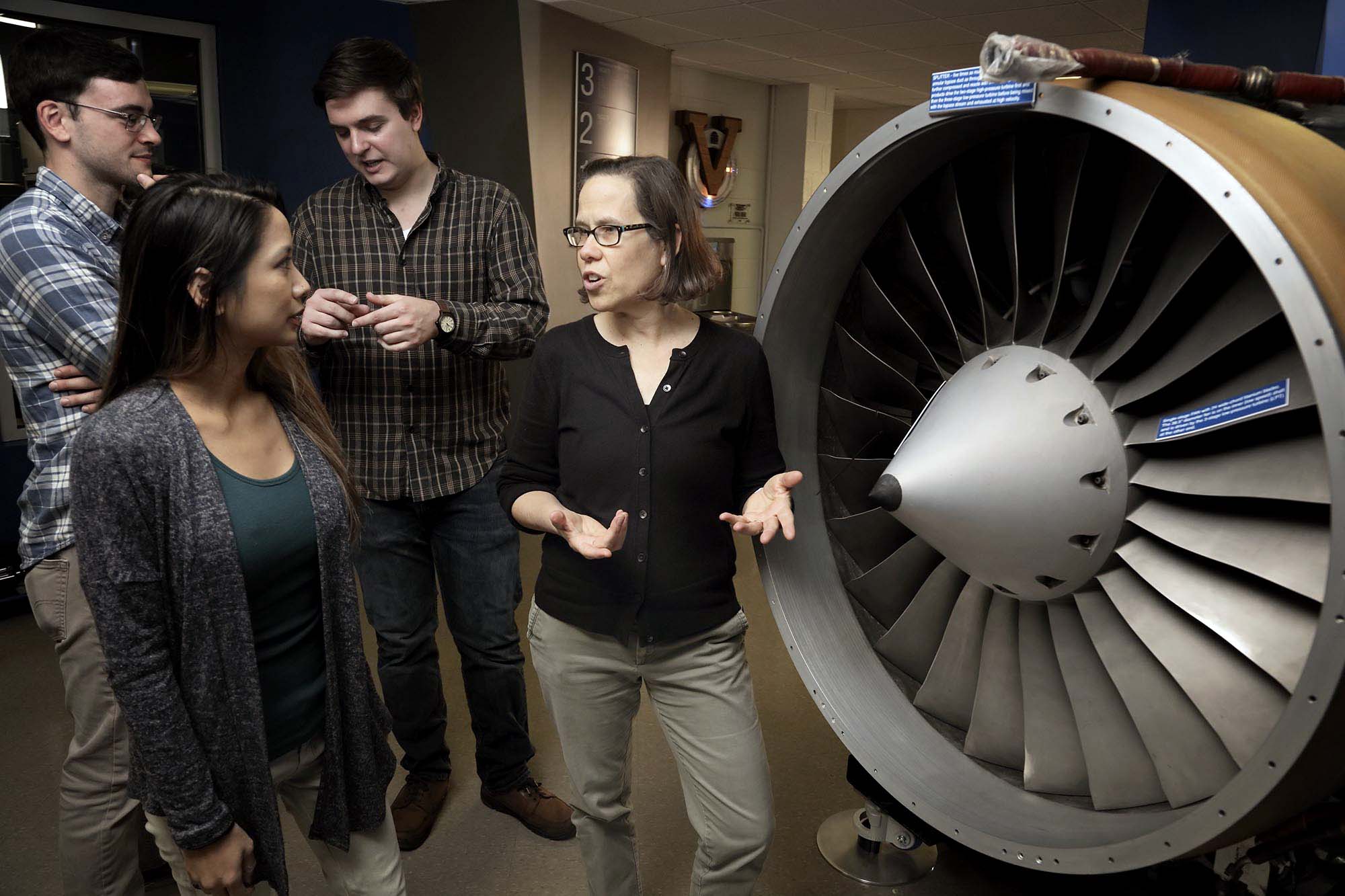
Elizabeth Opila, professor of materials science and engineering and mechanical and aerospace engineering, in UVA Engineering’s Rolls-Royce University Technology Center on Advance Materials Systems. (Photo by Tom Cogill)
“New higher-temperature materials allow for sharper wing leading edges and more maneuverable hypersonic vehicles than the space shuttle,” she said. “I enjoy unraveling complex mechanisms for high-temperature materials interacting with harsh environments, predicting their behavior and developing better materials. More durable high-temperature materials enable improved power, propulsion and thermal protection capabilities across a variety of aerospace and energy production applications.”
Understanding how materials operate under the extreme temperatures of hypersonic travel is a core strength of UVA Engineering researchers. Another is designing air-breathing propulsion engines, especially scramjets that can fly at Mach 5 or faster.
Jim McDaniel, mechanical and aerospace engineering professor emeritus, was intrigued by the challenges. He saw the enormous upside in hypersonic research and how that might one day help us reach further into space.
In 2009, McDaniel, together with Goyne and mechanical and aerospace engineering professor Harsha Chelliah, received a $10 million, five-year grant from NASA and the Air Force to establish the National Center for Hypersonic Combined Cycle Propulsion at UVA Engineering. UVA led a consortium of universities and corporate partners, including the University of Pittsburgh, George Washington University, Cornell University, Stanford University, Michigan State University, the State University of New York at Buffalo, North Carolina State University, ATK GASL Inc., the National Institute of Standards and Technology and The Boeing Company.
Chief among the missions of this new center was the design of numerical tools to build engines capable of flying as fast as Mach 12, while also having the ability to take off under their own power.
In 2012, Chelliah received a three-year, $2.2 million grant from the U.S. Air Force’s Office of Scientific Research to explore new ways to cool hot surfaces in hypersonic scramjet engines while also enhancing their operability range.
Throughout, UVA faculty trained the next generation of professionals who are advancing hypersonic technologies. Justin Kirk, who studied ways to measure air velocity in scramjets while a Ph.D. student, now builds scramjet engines for Northrup Grumman. Beth Rieken, who as an undergraduate worked on a laser diagnostic capability for UVA’s Supersonic Combustion Facility, is an aerospace engineer at NASA specializing in aerothermodynamics.
“The students we trained are now working in the industry, government or academia. They continue to develop technology that will allow us to fly at hypersonic speeds,” Goyne said.
With new funding from Congress and a mandate from the Department of Defense to spur research, the challenges of traveling at more than five times the speed of sound will again be studied and tested at UVA.
“We are sure that UVA will be able to assist the Department of Defense in the development of hypersonic technology with research that is more applied,” Goyne said. “By leveraging UVA’s expertise in this area, we hope to help the government develop new and innovative technology more quickly.”
Emphasis on the word “quickly.”
Media Contact
Article Information
November 12, 2020
/content/need-speed-uva-engineering-boosts-hypersonic-travel

